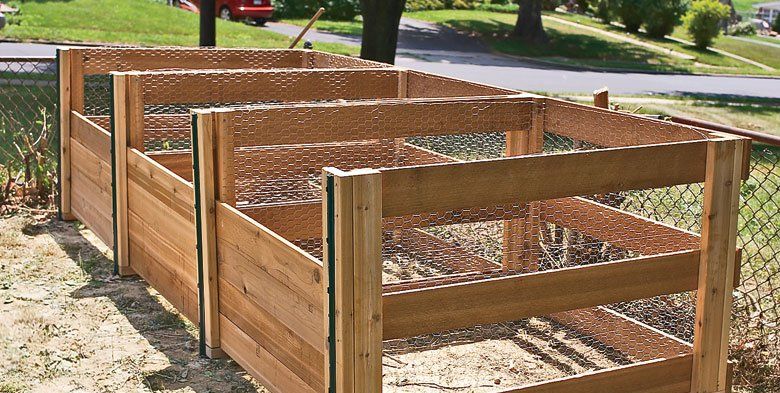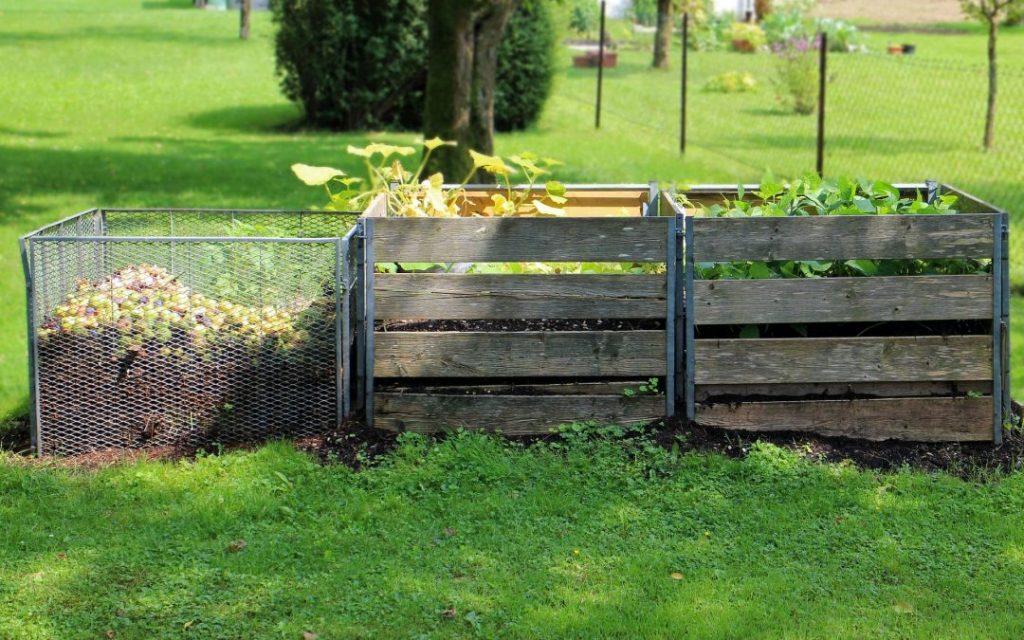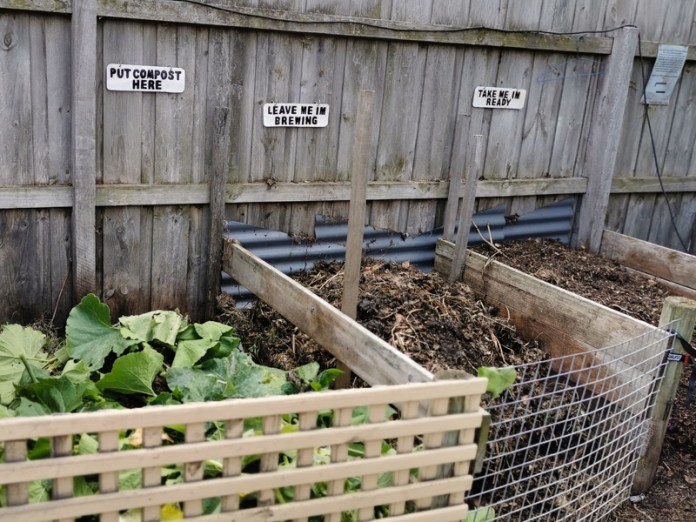In my previous article, we looked at soil and the best types of soil for growing gardens and lawns. This article focuses on maintaining that healthy soil through composting. Compost adds fertility to the soil. The microbial life in organic matter converts other soil elements into essential nutrients that plants need. Fibrous humus adds texture to the soil, preserving air pockets and providing spaces for plant roots. The spongy nature of humus absorbs and retains moisture for plants while draining away excess water from plant roots. Additional benefits of composting save you money from unnecessary chemical fertilizers and less waste to dispose of in your local landfill. The best advantage to composting is beautiful, healthy lawns, flowers, and vegetables.
To create compost the gardener can be involved in an elaborate process or as hands-off as desired. The main step in the composting process is to provide a suitable environment for your compost to decompose. It can be as simple as an area set aside to create a pile of brown stuff, green stuff, air, and water. Brown stuff is carbon-containing materials such as dried leaves or straw. Nitrogen-containing green materials are fresh grass clippings, weeds, and kitchen waste. Or composting can be as involved as creating compost teas and using worms to aid in the decomposition process in elaborate containers or roller bins.

Perhaps the simplest route is to create a compost pile or bin using wire mesh and corner posts or a wooden box in which to contain your compost. Using a container rather than just piling it in a corner of the yard helps prevent animals from getting into your compost, as composts can be toxic to pets and lure in unwanted, potentially harmful wildlife. You can find many designs for compost bins in books and online. Two factors to keep in mind when building a composting bin are the needs for air and water. Bins need to provide circulating air and moisture for the microbes to break down the materials containing carbon and nitrogen. Keyhole gardens provide one of the best direct uses of a composting bin in the center of a raised bed. Other composting bins require moving the decomposed material and incorporating it into the garden soil, but may provide soil that is broken down more thoroughly.

Once you have determined where and how you want to process your compost, you just need to start feeding your compost. Many different types of materials can be composted. Kitchen scraps such as egg shells, coffee grounds, tea leaves, vegetable trimmings can all be processed. Be mindful to never put animal proteins such as meat scraps, uncooked bones, or fats and oils into your kitchen compost. These substances, when broken down, turn into deadly toxic fumes. Also, animal feces from cats and dogs should never be put into compost. Herbivores such as rabbits, guinea pigs, cows, horses, and chickens create manure that can either be put directly into the garden soil but is better converted to composting soil in the compost bin. Yard wastes (grass and leaves) and garden trimmings and weeds can be put into the compost bin as long as care is taken to ensure no diseased trimmings or grass or weed seed heads are composted as they may grow in the garden when the compost is incorporated into the soil.
About once a month take a garden rake or pitchfork to your compost and turn it over to introduce some air into the decomposition process. In addition, when you water your garden, turn the hose on your compost to keep it moist, especially if it hasn’t rained in a while. As the compost breaks down into soil and humus it will sift itself toward the bottom of your compost bin. So the best compost to use in your garden comes from the bottom of the bin. The three best times to add compost to your soil are during the initial spring tilling, a little in mid-summer or a bit throughout the summer to add a little nutritional boost to your soil and in the late fall as you put the garden bed to rest. This last addition allows the soil to finish the composting process over the winter months and start again in the spring with the healthiest soil possible.
Using that yard waste and kitchen vegetable scraps will lighten the load on trash day and will give you a healthier, heartier garden allowing you to enjoy vibrant flowers, delicious fruits and vegetables and beautiful luscious shrubs, bushes, trees and lawns all year long.






